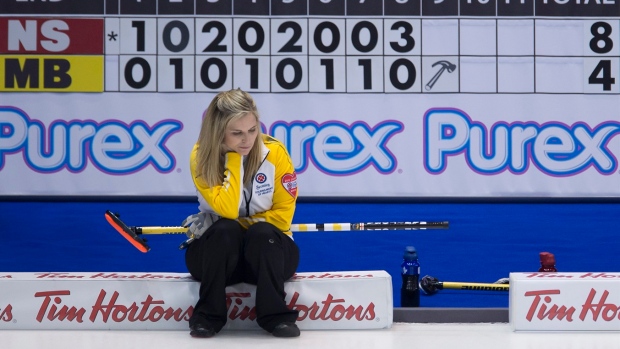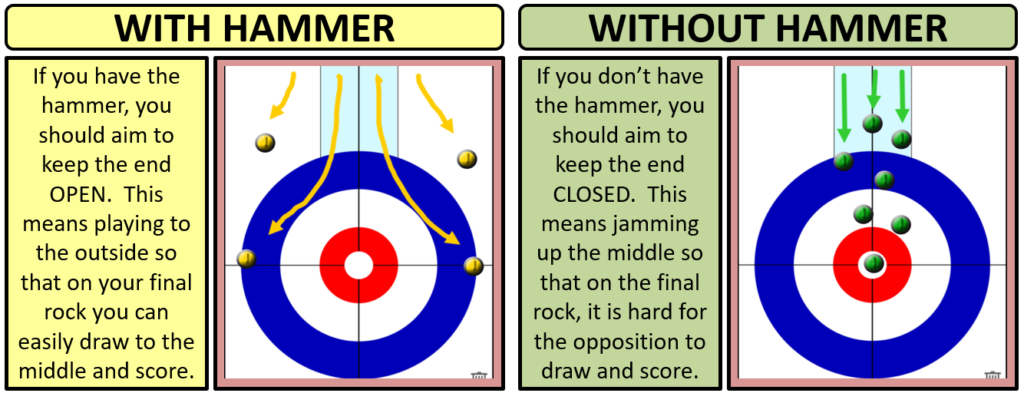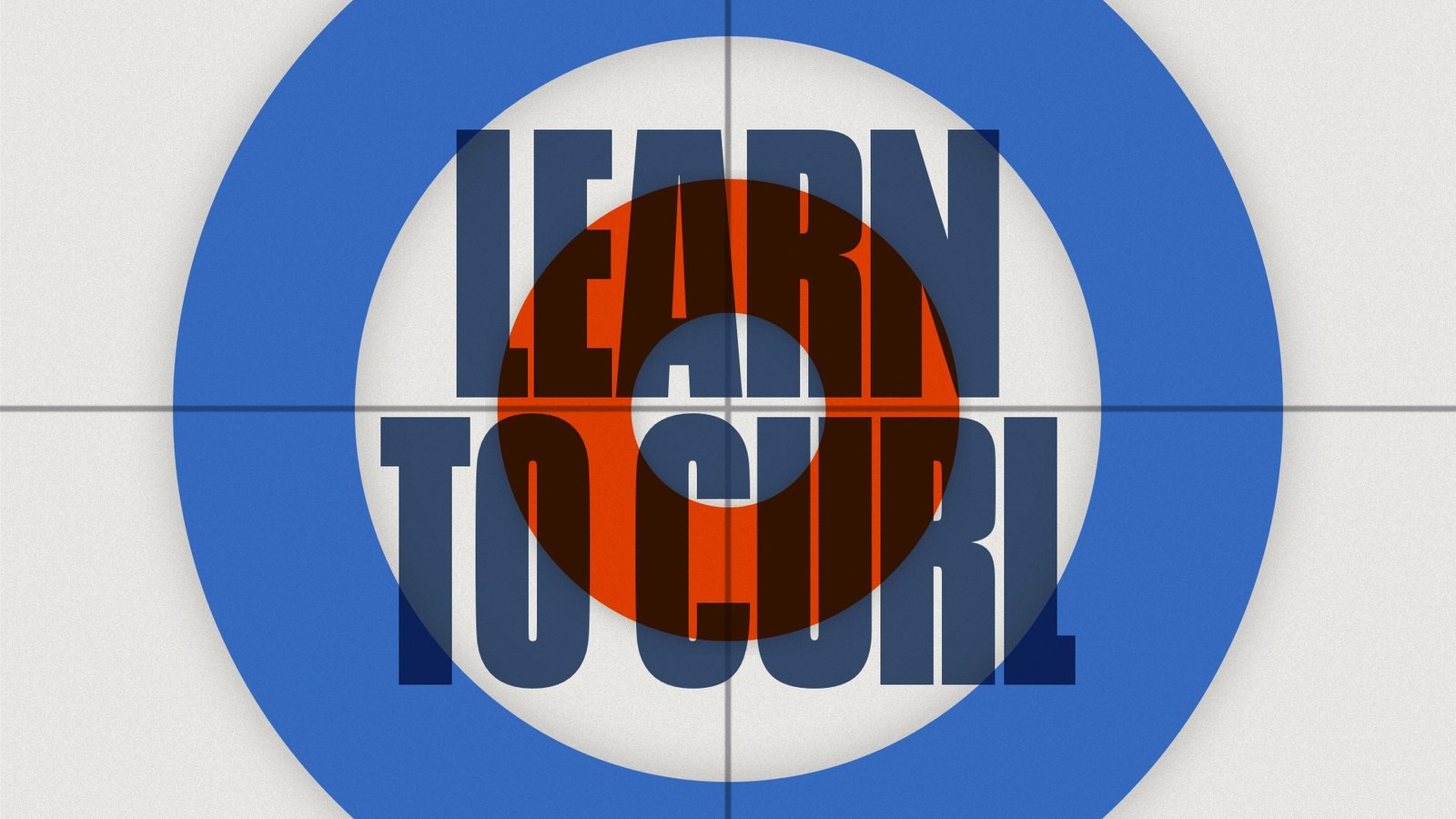In simple terms, the “hammer” is the name given to the last stone thrown in a particular end. In curling, it is considered an advantage to have the hammer because this means that your team has the last chance to influence the score. Therefore, control of the hammer should be at the forefront of every player’s mind during a game of curling!
In club curling, there are many different ways to decide which team gets the hammer at the start of each game. These can include rock-paper-scissors, flipping a coin, stopping a stopwatch on odds/evens, or spinning a curling stone to see where the handle points. It is usually the responsibility of the lead player on each team to agree on one of these methods and determine who gets the hammer for the first end.

In higher level competitions such as National Championships or the Olympics, the team that starts with the hammer is decided before the game begins using the Last Stone Draw. To find out more about this process, read our dedicated Draw Shot Challenge section of the website.
The scoreboard can also tell you a lot about who has the hammer. Often, the team that starts the game with the hammer will have asterisk (*) beside their name, such as in the image below. The hammer symbol under the end being played indicates which team currently has the advantage of throwing last.

However, there is much more to having the hammer than just throwing the last stone. Depending on whether or not a team has the hammer, they will play a completely different strategy. Most of the time, the team with the hammer will play their stones to the sides of the house, trying to keep the centre open so that they have a straight-forward last shot. In contrast, the team without the hammer will try to place their stones down the middle of the sheet, with the intention of making that last shot as difficult as possible!

Once each end has finished and the score is determined, the hammer must be allocated to the non-scoring team for the next end. This means that the team that has just scored, must now defend against the hammer in the next end. As a general rule, teams should aim to score multiple points when they have the hammer, while stealing (scoring without the hammer) or forcing (forcing the team with hammer to only score a single point) should be considered a success.
For more on curling terminology, visit our glossary page!
Hopefully you might like to come and give curling a try.
For a one-off session, visit our Try Curling page to book a two hour session for yourself, or bring friends and family.
Alternatively, you could book a place on one of our Learn To Curl courses which run over a series of 4 weekly two hour sessions.


